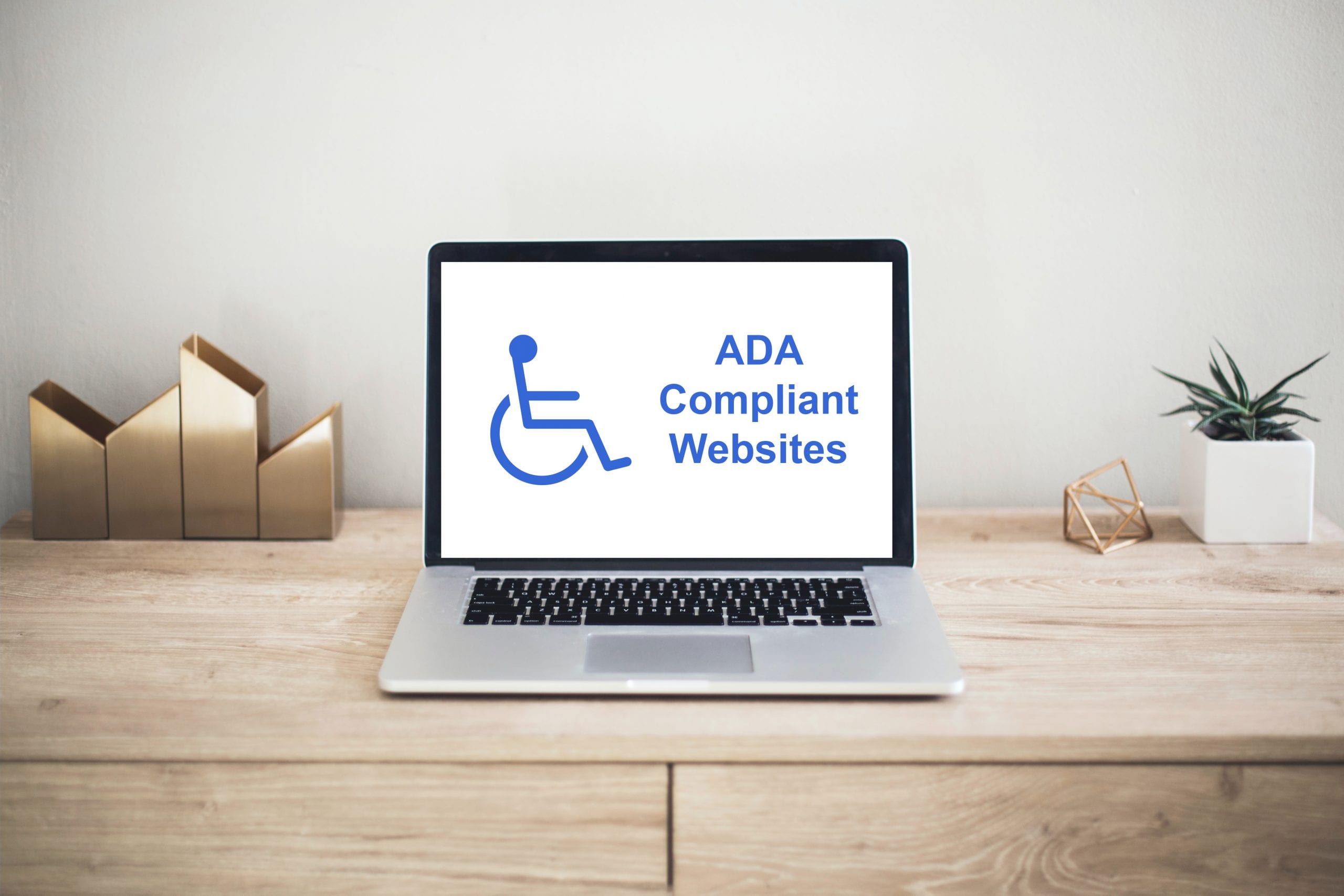In the ever-growing age of technology, more and more people are using computers and there need to be certain specifications to make sure that everyone is able to access the website. This means making your website ADA compliant.
A website that is ADA compliant, refers to the Americans with Disabilities Act Standards for Accessible Design. This act states that all electronic and information technology (aka websites), must be accessible to people with disabilities. You may have seen news stories about companies being sued for not being ADA compliant. This is happening more and more, especially with how popular and necessary technology is becoming.

You may be thinking, ‘my company doesn’t need to be compliant, it’s fine how it is.’ Well, unfortunately, you’d probably be wrong. Not only do state and local government agencies need to adhere to these rules, but so do private employers with 15 or more employees, as well as, businesses that operate for the benefit of the public. What happens if your website isn’t ADA compliant? Then you’d be liable and could have a lawsuit filed against you. It isn’t the easiest task to become ADA compliant, after all, there aren’t even official guidelines, but there are a set of recommendations from the U.S. Department of Justice.
But just what does making a website ADA compliant mean? Here are a few quick tips to know what to look out for. A trained website creator and website design company will be experts in this field. If you find one, hold on to them, because this is a unique skill for designers to have.
Make sure your videos (both live and recorded) and your photos have correctly written/edited captions. Don’t forget about your social media videos! Not only do your videos need dialogue captions, but you also need audio descriptions.
Unless you are using large text, keep the contrast ratio at 4.5:1. When it comes to text size, allow the users to be able to resize the size of the site text without having to use any assistive technology. However, this feature should not change the functionality of the site as a whole.
Simple, stay away from images that feature mostly text as there isn’t much of a way to make this compatible. Instead, keep the words, but make them a standalone, rather than on the image itself.
Navigation bars aren’t always the easiest for people with disabilities to read and aren’t the easiest for screen readers to pick up. You can keep your navigation for the general user, but it’s also best to incorporate an HTML sitemap and a site search. Always make sure the navigation bar/tools remain in the same spot on each page.
Make sure you label everything as well as you possibly can, in as much concise detail as possible. This will be helpful to the average user, but also very helpful to those using screen reading software.
A keyboard focus indicator allows a user to use the ‘tab’ key to navigate through the webpage by outlining the area you are focusing on. Sometimes you can even delve deeper into this feature by making it even more visually apparent to users.
It’s helpful to have a translation tool to help translate your site into the many different languages for the people that come across your site.
There are many more factors to making a website ADA compliant, but your expert website design company will have someone on the team that specializes in this unique area.
